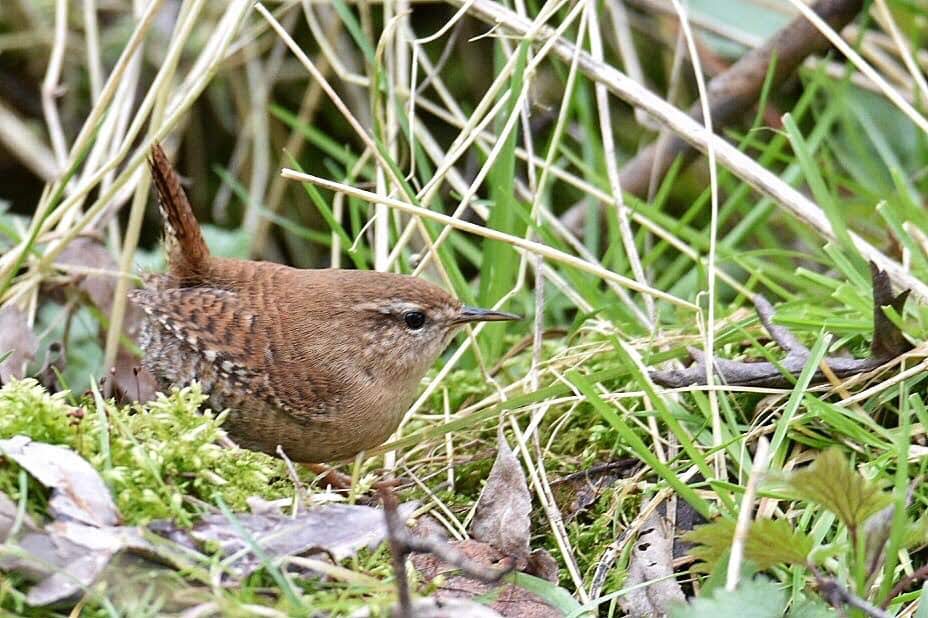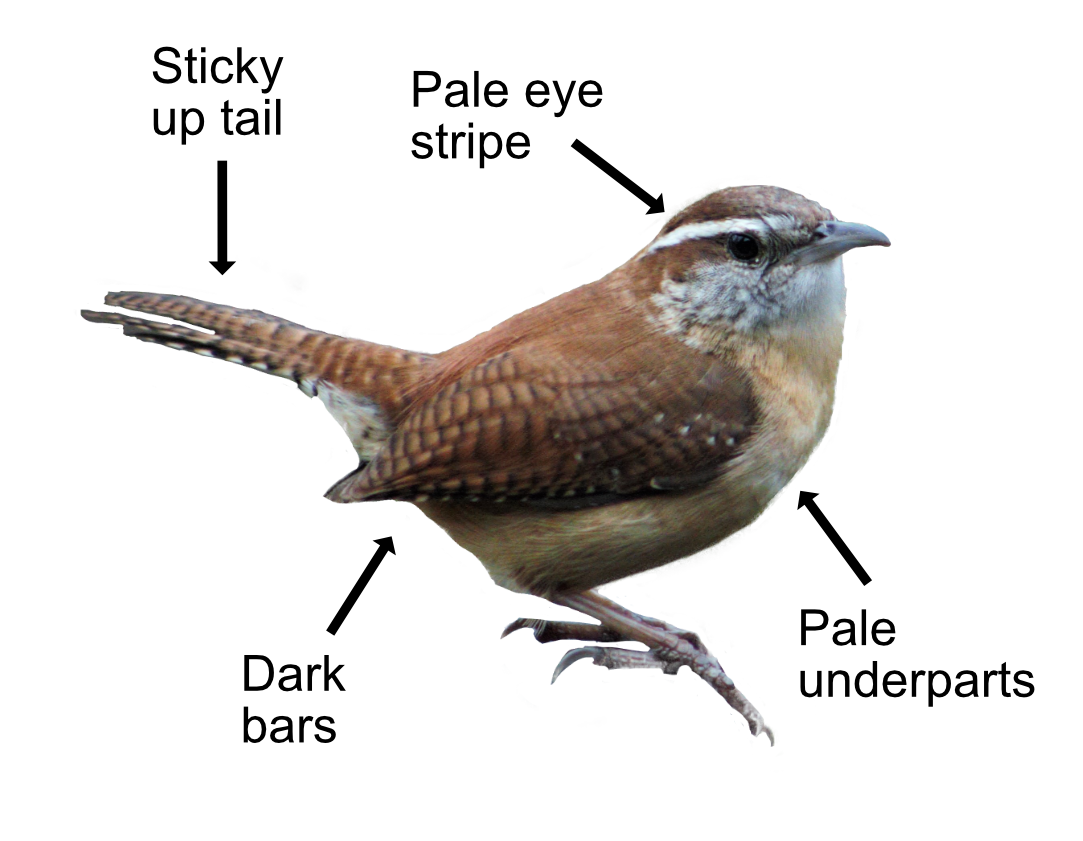
In Zulu folklore, the Wren is the king of birds. The story goes that all the birds gathered together to discuss which of them should be king. They decided that the bird that flew the highest should take the crown. The eagle soared way above the other contestants – only to discover that a plucky little Wren had ridden on his back and launched itself above him at the last moment, to win. Finding itself accused of trickery on its return to earth, the Wren was held prisoner under the watchful eye of an owl. The Wren waited until its gaoler had nodded off and then escaped, spending the rest of eternity avoiding capture by darting from cover to cover and keeping hidden.
The Wren is one of Europe's smallest birds. It is found anywhere with low cover, including mountains! It is a tiny, dumpy, energetic little bird with a short tail that is often cocked up. Just don't call it dumpy or you will get a nasty stare. Wrens are dark brown with fine black bars, paler underparts, and a pale stripe over the eye. For its size, it has a relatively long dark bill, great for getting spiders out of crevices.
The Wren's call is a forceful trill that sounds like a machine gun, loud and fast, and heard coming from the undergrowth. It can fire over 100 rounds (notes) in 5 seconds, which is some bit of hardware. It is amazing that something so small can make so much noise. The Wren physically trembles with the effort. Occasionally, just to scare you, the Wren practices his machine-gunning call from a higher perch. They sing throughout the year to maintain their territories, and only when it is really cold will they come together in communal roosts to keep warm. Sometimes this is in a nest box which does for a good barracks. 63 Wrens have been found in a single box!

Their flight is fast and generally close to the ground. These are the little brown birds you see whizzing across the road from hedge to hedge and disappearing. The Wren constantly searches for food, hidden in the depths of hedges or bushes in his battledress camouflage. The main food is beetles and spiders, though they can be partial to a bit of cheese on the bird table.
Their chief breeding habitat is deciduous and mixed woods, especially alongside a stream. Nesting starts in the second half of April. The male builds several domed nests made of moss, leaves, and grass. The picky female then chooses one and lines it with something soft before laying her 5-8 eggs, which hatch after 16 days. The young fly after 17 days. They usually raise two broods.
There are 8 million territories in Britain. Their numbers can fall significantly after a harsh winter, though they quickly recover over the following years. There are separate local races of Wren on Shetland, Fair Isle, Outer Hebrides, and St Kilda, all wearing slightly different style uniforms. The oldest recorded Wren lived to be 6 years old.
The name 'wren' comes from an Anglo-Saxon word applied to people who were small, busy, quick, and energetic just like this little bird is. The British Wren's Latin name is 'troglodytes troglodytes' which comes from the Greek word 'troglodytes' ('trogle' a hole, and 'dyein' to creep) and means 'cave-dweller'. This is from their tendency to forage in dark crevices and commando crawl around under bushes.